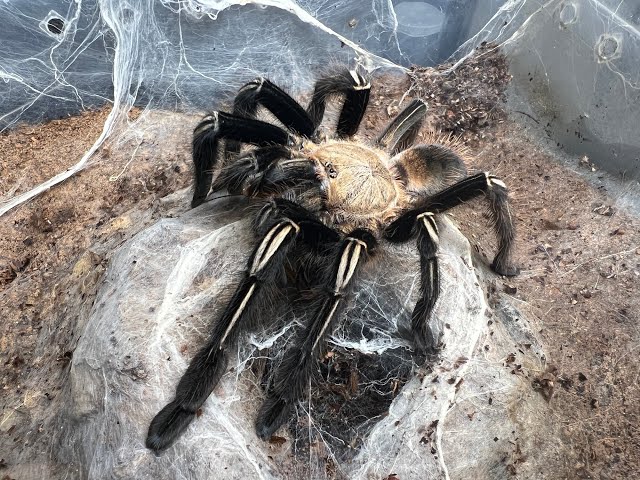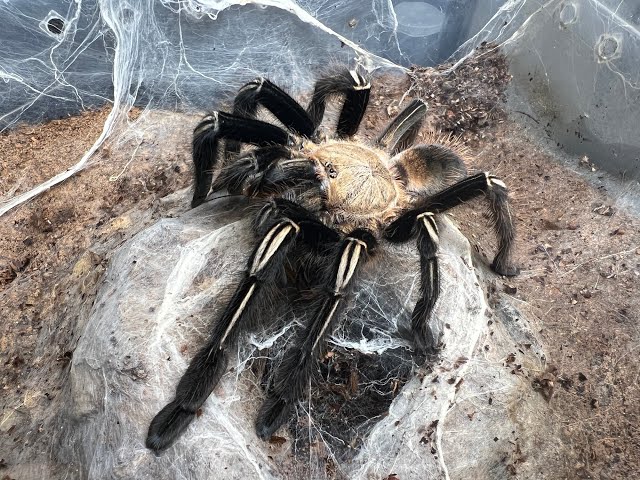Tarantuladen.co.za
Skeleton Leg (Ephebopus Murinus)
Skeleton Leg (Ephebopus Murinus)
Out of stock
Couldn't load pickup availability
Ephebopus murinus is equal parts style and attitude — famous for its skeletal leg striping and notorious for its speed and reactivity. It’s a tropical rainforest species that loves to burrow but won’t hesitate to come up swinging when disturbed. A great choice for intermediate keepers who want something with flair and fire.
Quick Facts
Common Name: Skeleton Tarantula
Scientific Name: Ephebopus murinus
Origin: Northern South America (Brazil, Guyana, Suriname)
Size: 4.5–5.5 inches (11–14 cm) leg span
Lifespan:
- Females: 12–15 years
- Males: ~3–4 years
Temperament: Skittish to defensive, fast and reactive
Coloration
Deep chocolate brown body
Creamy white striping along the femur and tibia — bold skeleton look
Copper or golden carapace with light iridescence
One of the most visually dramatic New World species
Housing & Care
Enclosure Type: Fossorial/terrestrial hybrid — loves to dig deep
Substrate: 6–8 inches of moist substrate (coco fiber/topsoil mix)
Humidity: 75–85% — thrives in high humidity environments
Temperature: 74–80°F (23–27°C)
Decor:
- Deep starter burrow or hide
- Moss, leaf litter, and a water dish
- Good ventilation is crucial to balance humidity and prevent mold
- This species burrows heavily and may web over the entrance — you’ll rarely see it unless it feels secure.
Feeding
Diet: Crickets, roaches, mealworms
Feeding Schedule:
- Slings: 2–3x/week
- Juveniles: Weekly
- Adults: Every 10–14 days
Voracious feeder — strikes quickly and drags prey into the burrow
Why It’s Legendary
Skeletal leg pattern is totally unique — instantly recognizable
Active and bold — not just a pet hole if conditions are ideal
Great webbing and digging behavior
High contrast coloration + tropical vibes
Perfect “wow” spider for intermediate hobbyists ready for more speed
Notes
Defensive — known to slap or bolt when disturbed
Not for handling
Prefers deeper setups with stable humidity
Can be quite reclusive if stressed or improperly housed
Needs attention to ventilation to avoid mold in high humidity
Share


